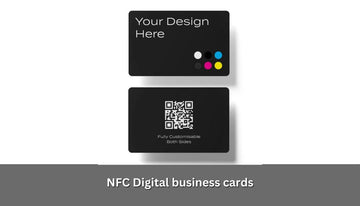Future of Contactless Sharing

Introduction to Contactless Sharing Trends
Contactless sharing has become a significant trend, driven by advancements in technology and changing consumer behaviors. The proliferation of Near Field Communication (NFC), Radio Frequency Identification (RFID), and innovative proximity sensors has revolutionized how we share and transact. These technologies facilitate seamless and secure exchanges, reducing the need for physical contact, which has gained prominence, especially during the COVID-19 pandemic. Mobile wallets, wearable devices, and voice-activated payments are at the forefront of this transformation, offering convenience and efficiency to users. As businesses and consumers increasingly adopt these technologies, the landscape of digital transactions is rapidly evolving (Finextra Research) (DigiPay) (Home of FinTech & Banking News).
The Rise of Mobile Wallets
Mobile wallets have seen a significant surge in adoption, driven by their convenience and the growing reliance on smartphones. Initially popularized by platforms like Apple Pay and Google Pay, mobile wallets allow users to store their payment information securely on their devices and make transactions with a simple tap. This trend has accelerated as more retailers integrate mobile wallet acceptance into their point-of-sale systems. The COVID-19 pandemic further boosted this adoption, as consumers sought contactless payment methods to minimize physical contact.
Moreover, mobile wallets are expanding beyond payments, offering features like loyalty programs, digital coupons, and ticketing, making them versatile tools for daily transactions. As the technology continues to evolve, mobile wallets are expected to become even more integral to the shopping experience, driving a shift towards a more digital and cashless society.

Wearable Technology and Contactless Payments
Wearable technology has become a key player in the contactless payment ecosystem, driven by the demand for convenience and the integration of advanced technologies. Devices such as smartwatches, fitness trackers, and even smart rings now come equipped with Near Field Communication (NFC) capabilities, allowing users to make payments with a simple tap. This trend is especially popular among younger demographics who value the ease of making payments without needing to carry cash or cards.
The COVID-19 pandemic accelerated the adoption of wearable payments as consumers sought safer, touch-free transaction methods. These devices offer more than just payment capabilities; they can also integrate with digital wallets, provide health monitoring, and offer personalized user experiences. As wearable technology continues to evolve, it is expected to further streamline the payment process and become a staple in everyday transactions.

Biometric Authentication: Enhancing Security
Biometric authentication is revolutionizing the security landscape of contactless payments. By leveraging unique biological traits such as fingerprints, facial recognition, and iris scans, biometric systems offer a high level of security that traditional PINs and passwords cannot match. This technology is increasingly being integrated into smartphones, payment cards, and even wearable devices, ensuring that only the authorized user can complete a transaction.
The adoption of biometric authentication has been accelerated by the need for secure, contactless transactions during the COVID-19 pandemic. Consumers appreciate the added layer of security without sacrificing the convenience of quick, tap-and-go payments. Financial institutions and payment providers are investing heavily in biometric technologies to combat fraud and build consumer trust. As these technologies become more widespread, we can expect a significant reduction in unauthorized transactions and a smoother, more secure payment experience.

QR Code Payments: Convenience and Versatility
QR code payments have emerged as a popular and versatile contactless payment method. By simply scanning a QR code with a smartphone, consumers can make payments quickly and securely without the need for physical contact. This method is particularly advantageous for small vendors, pop-up shops, and high-traffic areas where traditional point-of-sale systems might not be practical.
The convenience of QR code payments lies in their simplicity and accessibility. Users do not need specialized hardware; a smartphone with a camera is sufficient. This has led to widespread adoption in markets worldwide, especially in regions with high mobile phone penetration. QR code payments also offer enhanced security, as they minimize the risk of card skimming and other fraudulent activities. As businesses and consumers continue to seek efficient and secure payment options, QR codes are set to play a pivotal role in the future of digital transactions.
Security Challenges and Solutions
While contactless payments offer unparalleled convenience, they also present unique security challenges. One primary concern is the potential for data theft through "eavesdropping," where malicious actors intercept the wireless communication between the payment device and terminal. Another risk is "relay attacks," where fraudsters extend the communication range to trick the terminal into accepting unauthorized payments. Additionally, lost or stolen devices can be misused if not promptly reported and deactivated.
To address these issues, several solutions are being implemented. Biometric authentication, such as fingerprints and facial recognition, adds an extra layer of security by ensuring that only the authorized user can complete a transaction. Advanced encryption techniques and tokenization protect sensitive data during transmission, making it difficult for hackers to access usable information. Dynamic data, which changes with each transaction, further reduces the risk of fraud. As technology evolves, continuous innovation in security measures is crucial to safeguarding the integrity of contactless payment systems.
Integration with E-Commerce
The integration of contactless payments with e-commerce platforms is transforming the online shopping experience. This synergy allows consumers to make quick, secure payments with just a tap or scan, enhancing convenience and reducing checkout times. Online retailers benefit from higher conversion rates and increased customer satisfaction due to the seamless payment process.
Contactless payment options like digital wallets and QR codes are becoming standard features on e-commerce websites, providing a frictionless transaction experience. As the demand for touch-free solutions grows, the alignment between e-commerce and contactless payments is expected to drive further innovation and adoption in digital commerce.
Conclusion
The rapid adoption of contactless sharing technologies is reshaping how we interact and transact. From mobile wallets and wearables to biometric authentication and QR code payments, these innovations offer unparalleled convenience and security. As these trends continue to evolve, they promise to drive us closer to a seamless, cashless future.
We at NFC Tagify provide all sort of NFC Solutions or you may contact us: Tel. 01600800080, Email: info@nfctagify.com









